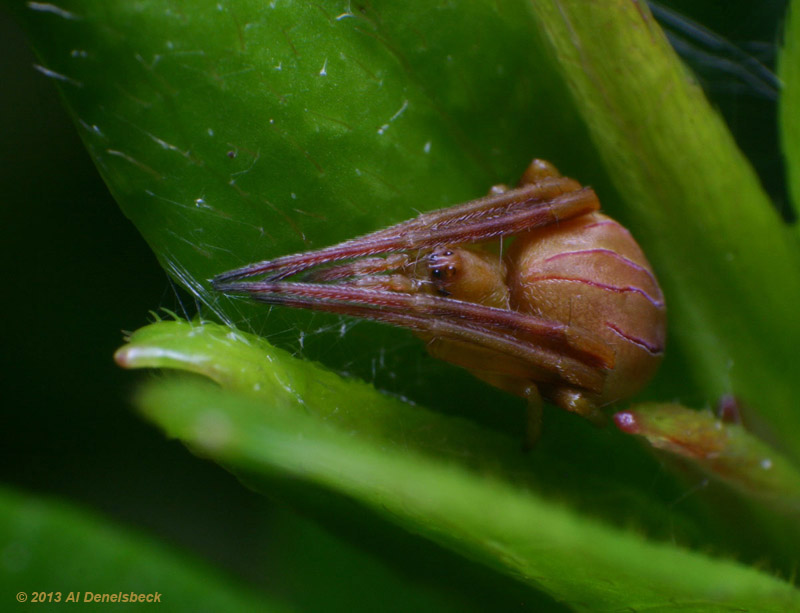Canon 300D Rebel, handheld
Reversed Sigma 28-105 at f16, 28mm
Sunpak FP22 flat-panel flash with diffuser/softbox
1/160 second at ISO 200
Canon 300D Rebel, handheld |
| Not too big | |
 |
|
This particular species of spider gave me the unshakeable impression that it had eaten far too much and was starting to split across the abdomen. This actually occurs, to a degree, because as arthropods grow they will split open their old 'skin' (exoskeleton) and shed it, allowing themselves to grow bigger. But it doesn't look like this – the stripes on the abdomen are not cracks or fissures, but merely markings. Meanwhile, the spider itself was doing its best impression of a small bud, and the camouflage was doing a remarkably good job, at least up to the species that could recognize that buds do not generally appear in the middle of existing leaves. To the best of my knowledge, that's only humans, and not all of us at that.
Now, you can tell people how small something is. You can give comparative sizes with something they know. You can even include a scientific scale. But in my experience, the best way by far of illustrating the magnification is by including something that they instinctively recognize in the same frame.
 Acacesia hamata are very small spiders, orb weavers that make the classic 'wheel' style web; as far as I know this is only at night, and by day they find a nice hiding spot and tuck in to avoid daylight predators. I'm not sure this one even knew my fingers were underneath the leaf, and truth be told, doing something like this to illustrate scale can often be difficult to impossible – even if you can get your fingers close enough to the subject, they won't usually hang around for you to get the photograph, not to mention that you're now obliged to shoot one-handed. But I'm glad I managed it, because it shows quite well how much magnification the reversed Sigma 28-105 can accomplish, and how sharply. Look at the top image again; yes, those eyes are much smaller in diameter than a typical straight pin, so how small must those hairs on the legs be?
Acacesia hamata are very small spiders, orb weavers that make the classic 'wheel' style web; as far as I know this is only at night, and by day they find a nice hiding spot and tuck in to avoid daylight predators. I'm not sure this one even knew my fingers were underneath the leaf, and truth be told, doing something like this to illustrate scale can often be difficult to impossible – even if you can get your fingers close enough to the subject, they won't usually hang around for you to get the photograph, not to mention that you're now obliged to shoot one-handed. But I'm glad I managed it, because it shows quite well how much magnification the reversed Sigma 28-105 can accomplish, and how sharply. Look at the top image again; yes, those eyes are much smaller in diameter than a typical straight pin, so how small must those hairs on the legs be?
